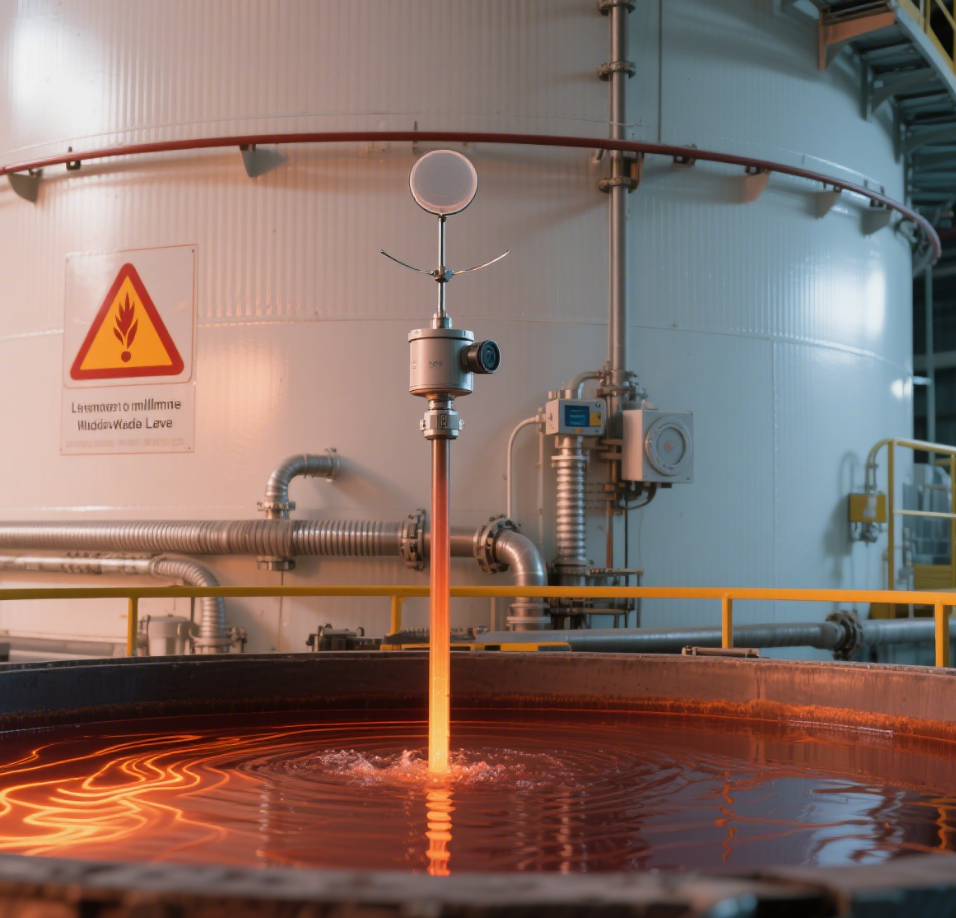Ensuring Radar Level Measurement Stability in High-Temperature Tanks
High-temperature storage tanks are common in industries such as chemicals, petrochemicals, and pulp processing. In these environments, millimeter-wave radar level meters must deal not only with vapors and pressure but also with persistent heat that can reach 80–100°C. While radar technology is known for stability, one subtle detail determines whether measurement remains reliable over years of operation: antenna heat dissipation.
This article takes a deep dive into why antenna cooling matters, how high temperatures impact radar performance, and the practical measures engineers can adopt for long-term accuracy.
Why Heat Affects Radar Performance
When radar antennas are installed on tanks holding hot liquids or slurries, they become exposed to constant heat and rising vapors. Three key effects occur:
-
Thermal stress on materials: PTFE, PEEK, and metal antennas expand under heat. Over time, this can shift dielectric properties and reduce signal consistency.
-
Vapor boundary layers: Rising hot vapor creates a turbulent layer above the liquid surface, weakening signal reflection.
-
Electronics reliability: Even with external housings, heat conduction can elevate circuit temperatures, leading to frequency drift or noise.
These issues may appear as fluctuating readings, slow response times, or in worst cases, complete signal loss.
Antenna Cooling and Design Solutions
Manufacturers such as Linpowave integrate design features that help radar systems remain stable under extreme conditions:
-
Waveguide Extensions
By physically distancing the antenna from the tank opening, waveguides limit direct exposure to vapor and reduce heat transfer. -
Air-Cooled or Ventilated Housings
Some radars use ventilation fins or purge air systems to dissipate heat away from sensitive electronics. -
High-Temperature-Resistant Materials
Ceramic antennas and reinforced PTFE maintain dielectric stability above 100°C, preventing deformation. -
Optimized Installation Angles
Slight tilts (3°–5°) prevent antennas from facing vapor plumes directly, improving signal reflection stability.
Case Study: Heat Management in a Pulp Mill
At a pulp mill, engineers installed radar level meters on digesters operating at 85°C. Initially, the system showed periodic signal drift. Diagnostics revealed the antenna was overheating due to constant vapor exposure.
To resolve this:
-
A 250 mm waveguide extension was added.
-
Ventilation fins were installed on the antenna housing.
-
The radar was re-positioned at a slight tilt to reduce direct vapor contact.
After these changes, measurements stabilized, recalibration frequency dropped by 80%, and downtime decreased significantly.
Practical Recommendations for Engineers
-
Select radar models rated for high-temperature applications (above 80°C).
-
Use internal temperature monitoring functions to track radar health.
-
Apply tank roof insulation to reduce external heat transfer.
-
Consider periodic maintenance checks every 12–18 months to detect early wear.
FAQ
Q1: Can standard radar meters operate at 90°C?
A1: Standard models may struggle. Always select high-temperature-certified devices.
Q2: Will air purging help in hot, vapor-heavy tanks?
A2: Yes. Controlled airflow cools the antenna and reduces condensation.
Q3: What solutions does Linpowave offer?
A3: Linpowave integrates waveguide antennas and high-grade materials to handle heat and vapor in chemical and pulp industries.
Q4: What if condensation still creates false echoes?
A4: Adjust radar angle, enable echo suppression, or consider guided-wave radar where conditions are extreme.
External References for Further Reading
Conclusion
High-temperature tanks present unique challenges for radar level measurement, but with proper antenna heat dissipation strategies—waveguide extensions, cooling mechanisms, and smart installation—engineers can achieve stable and long-lasting performance.
By focusing on this often-overlooked detail, plants can minimize recalibration costs, avoid downtime, and ensure safety in demanding industrial environments.



